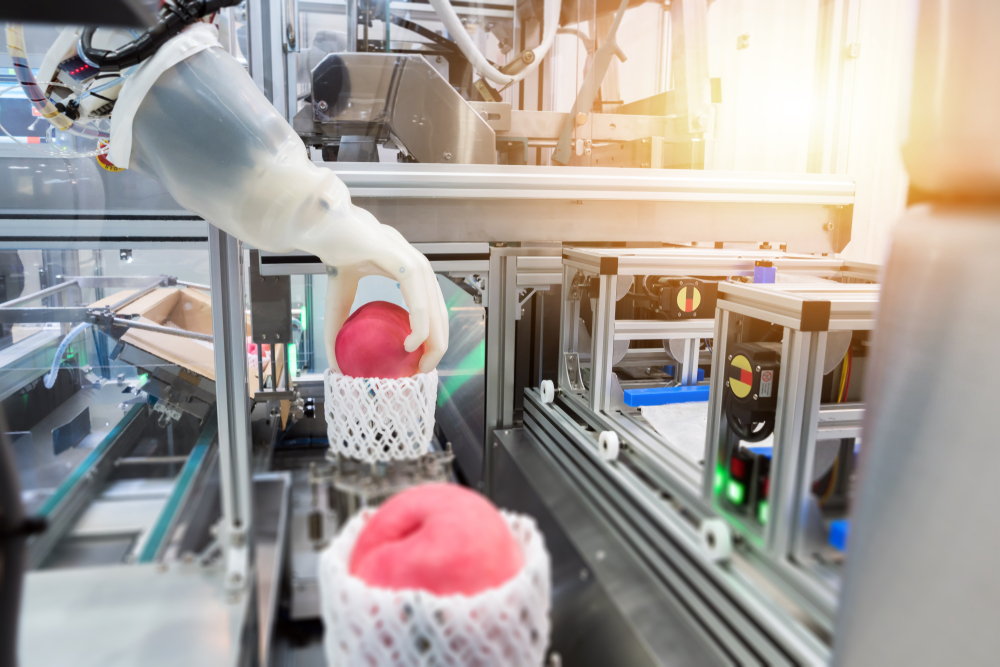Understanding Food Packaging Industry: A Look Inside the Modern Production
Food packaging is an essential part of the production process, ensuring safety and freshness of every product. It combines technology, hygiene, and teamwork to protect food quality from factory to shelf. Discover how this process supports the modern food industry.

Modern food packaging facilities operate as complex ecosystems where efficiency, safety, and quality converge. Workers in these environments handle everything from raw materials to finished products, ensuring that items reach consumers in optimal condition. The industry employs millions globally, with roles ranging from machine operators to quality control specialists, each contributing to the seamless flow of packaged goods through supply chains.
How Does the Food Packaging Process Work?
The food packaging process typically begins with receiving raw materials and empty packaging components. Workers prepare production lines by loading materials, calibrating machinery, and conducting pre-operational checks. Automated systems then fill, seal, and label packages at high speeds, while human operators monitor equipment performance and make adjustments as needed. The process varies depending on product type—liquids require different handling than solids, and perishable items demand faster throughput than shelf-stable goods. Modern facilities often integrate conveyor systems, robotic arms, and vision inspection technology to maintain consistency. Workers must understand material properties, machine capabilities, and product specifications to troubleshoot issues quickly. The coordination between automated systems and manual oversight ensures that packaging meets both efficiency targets and quality requirements throughout each production shift.
What Hygiene and Quality Standards Apply?
Hygiene and quality standards in food packaging are governed by strict regulations that vary by region but share common principles. Facilities must comply with food safety management systems such as HACCP (Hazard Analysis and Critical Control Points), which identifies potential contamination risks at every production stage. Workers follow rigorous personal hygiene protocols, including handwashing procedures, protective clothing requirements, and restricted access zones. Equipment undergoes regular cleaning and sanitization according to documented schedules, with verification testing to confirm effectiveness. Quality control checkpoints occur throughout production, with inspectors examining package integrity, seal strength, labeling accuracy, and product weight. Many facilities maintain climate-controlled environments to prevent microbial growth and preserve product freshness. Documentation systems track every batch, enabling rapid response if quality issues arise. These standards protect consumer health while maintaining brand reputation and regulatory compliance across international markets.
Which Packaging Technology and Innovation Are Emerging?
Packaging technology and innovation continue transforming the industry through automation, smart systems, and material science advances. Robotic packaging lines now handle complex tasks like product sorting, orientation correction, and customized packaging configurations with minimal human intervention. Vision systems equipped with artificial intelligence detect defects invisible to the human eye, rejecting substandard packages before they leave production areas. Modified atmosphere packaging extends product shelf life by replacing oxygen with protective gas mixtures, reducing food waste throughout distribution channels. Active and intelligent packaging incorporates sensors that monitor freshness, temperature exposure, and package integrity, providing real-time data to supply chain managers. Digital printing technology enables shorter production runs with variable designs, supporting personalized marketing campaigns and regional product variations. These innovations reduce labor requirements for repetitive tasks while creating new roles focused on system programming, maintenance, and data analysis within packaging operations.
How Does Sustainability in Food Production Factor In?
Sustainability in food production has become a central concern for packaging operations, driven by environmental regulations and consumer preferences. Facilities increasingly adopt recyclable and biodegradable materials to reduce plastic waste accumulation in landfills and oceans. Lightweight packaging designs minimize material usage without compromising protection, lowering transportation emissions across distribution networks. Energy-efficient machinery and renewable power sources reduce the carbon footprint of packaging operations. Water recycling systems recover and treat process water, decreasing freshwater consumption in cleaning and cooling applications. Many companies now implement circular economy principles, designing packaging for easy disassembly and material recovery at end-of-life. Workers receive training on waste segregation, material handling, and efficiency practices that support environmental goals. These sustainability initiatives often generate cost savings through reduced material purchases and waste disposal fees while meeting corporate responsibility commitments and regulatory requirements.
What Safety Procedures in Packaging Protect Workers?
Safety procedures in packaging environments address mechanical hazards, ergonomic risks, and chemical exposures that workers encounter daily. Lockout-tagout protocols prevent equipment from starting unexpectedly during maintenance or cleaning activities. Machine guarding shields moving parts that could cause injury, with emergency stop buttons positioned within easy reach throughout production areas. Ergonomic assessments identify repetitive motion risks and heavy lifting tasks, leading to workstation redesigns or assistive equipment installation. Personal protective equipment requirements vary by task but commonly include safety glasses, hearing protection, and cut-resistant gloves. Chemical handling procedures govern the use of cleaning agents and adhesives, with safety data sheets accessible to all workers. Regular safety training reinforces proper techniques and hazard awareness, while incident reporting systems track near-misses and actual injuries to identify improvement opportunities. These comprehensive safety measures reduce workplace accidents and create healthier working conditions for packaging professionals.
Conclusion
The food packaging industry represents a sophisticated blend of human expertise and technological advancement, operating under stringent standards that protect both products and people. As automation and sustainability initiatives reshape operations, the sector continues adapting to meet evolving consumer expectations and regulatory requirements. Understanding these processes reveals the complexity behind everyday packaged products and the dedicated professionals who ensure quality and safety throughout production. The ongoing evolution of packaging technology promises further improvements in efficiency, environmental impact, and food preservation capabilities for years to come.




